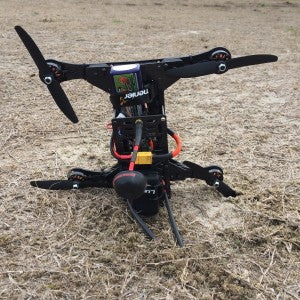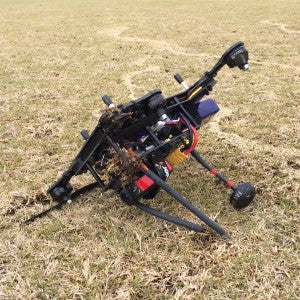The weather hasn’t been cooperating here so I haven’t had a lot of time to fly but after putting about 20 batteries through Hovership’s ZUUL Racehound I can say this thing kicks ass.
I think most quad frames if tuned correctly will fly very similar from one brand to another so we will focus more on features, durability and build.
 Durability
Durability
For an FPV addict like me, the worst thing that could happen is that you break something in a crash and have to bench your quad while you wait for replacement parts. The more I crashed the ZUUL the more I fell in love with it. This thing is a beast! I’ve flown full speed into an iron gate, smashed into trees, cut countless branches, landed on concrete, ran into swing sets and barrel rolled straight into the ground. Any of these crashed would have benched my QAV250. The worst thing that happened in all these crashes were some broken props.
The secret to the Racehound’s insane durability are the folding arms. They act like crumple zones in a car. Unlike quads with fixed arms, all impacts are absorbed directly to the frame, fragile electronic parts and motors. The folding arms are like dampeners that soften the impacts before the energy is transferred to the quad itself. I was a bit skeptical in the beginning but I can tell you for sure that it works.
Build
In part 2 of this review, we looked at the build. The ZUUL Racehound is overall a pleasure to build. The super wide body makes it easy to layout components and all the holes on the top plate makes mounting easy. There are two positions you can place the screws for the arms, folding and fixed. I highly recommend using the folding holes. Even if you never plan on folding the arms to make it easier to transport. You can adjust the tension of the arms by adjusting the tightness of the bolts.
Flying
The Racehound is so smooth. I reused all the electronics from my beat up QAV250 except the ESC’s and a new Naze32 board. On the QAV250 I could never get a jello free recording on the Mobius even when using Luminier’s camera vibration damping plate. Not only did this not work, the rubber bobbins split in half on the first crash. The video above I basically just zip tied the Mobius on the top plate and was able to get jello free video.
I’m not sure what it is about the frame, maybe the 265mm size, no matter what PIDs I used I never noticed any oscillations. Even when descending the quad felt really steady.
Conclusion
After all my horrendous crashes, the Racehound is still flying flawlessly. Besides a few scratches, the carbon fiber is all in tact. If you are looking for a strong, durable, upgradeable and small FPV racing quadcopter frame, this should be on top of your list. For $95 Hovership’s ZUUL Racehound gets a highly recommended rating from me.

